I hate early morning pickups; I never sleep comfortably the night before because I always think I am going to miss the flight, bus, etc. Ugh! The same was true last night; I saw the clock at 1:30, 3:00, 4:30 and finally, at 5:30 I gave in and got up. By 6:30 we were in the lobby waiting and it was just as well; our bus came early! FFS!
It always surprises me when huge motor-coaches effortlessly negotiate their way through the tiny back streets of cities. Constantly making wide turns where the streets seem to expand to match the width of the coach, always appearing as though they escaped yet another near-miss. With expert precision, our coach maneuvered its way through Miraflores, picking up fellow passengers and heading south-east, out of the city.
We snaked along the coastline keeping the ocean on our right for several hours, before coming to an obscure stop in the middle of nowhere. A two-story building cobbled together with bamboo and glass. You ordered outside, picked up your food outside and ate outside. I’m not sure what was in the building.
Here, we would have lunch; a rather eclectic menu and venue.
Walking onto the property, we passed a countertop where a lady was making a variety of juices, mixing various fruit purées with tap water. Note to self, don’t drink the juice.
Peru’s tap water is not potable for foreigners and we have been warned by an array of people from here and at home to avoid it at all costs. It is said that you are almost guaranteed to get a stomach bug if you drink the smallest amounts. Paul and I shared a knowing look and kept on moving.
Lined up outdoors in the cool morning breeze, we hugged our chests to keep warm and waited for our turn to pay the ‘Senor’ who handed us a ticket and we in turn, gave it to the cook. Our choices were avocado sandwich, egg on bread or pork and sweet potato sandwich with picked onion. The later was recommended so Paul and I decided to share. While tasty and satisfying the most notable item was the accompanying coffee...if I was tired before, there wasn’t as chance I would be tired after drinking this! OMG! Peruvian coffee, I am in love with you!
With an extra spring in my step, Paul and I decided to stretch our legs and walk the premises before getting back onboard the bus. The resturant grounds was a tired mismatch of a small, poorly looking banana plantation, a fabric bird coup, housing two varieties of birds and their fledglings, neither of which Paul or I had ever seen before. There was a dog pound where a single, weary black lab sat looking at us with sad old eyes.
There was a cantering horse parading the grounds and off to the corner, a hundred or more guinea pigs.
It may come as a surprise to you to know that a popular Peruvian dish is ‘cuy’ (koo-ee), known to us as guinea pig. Here, at this unlikely resturant, ‘cuy’ must be very popular as guinea pigs were aplenty behind the resturant. At one point, a man stepped past us, reached in the the pound, gently took one and placed him into a small cage and brought him to the manger.
I was somewhat surprised by the businesslike approach of the man collecting the guinea pig and I simply watched, knowing that I was witnessing two cultures collide. Seeing what others would consider a pet being carted off as someone’s potential meal, Paul and I stood there and almost in unison said “So long, little fella!”
Full Disclosure: (these next 4 paragraphs may not be suitable for vegetarians, vegan’s or animal lovers in general).
Now, as many of you know, I am an omnivore... I simply can’t imagine life without meat. I’m not talking about processed meat, but honest-to-goodness, stick-it-on-the-grill-‘and-sizzle-it-meat! I don’t believe in treating anything inhumanely but honestly, I look at just about every animal and wonder what it might taste like and given the opportunity, I will eat, just about anything.
Soooo, in the spirit of full disclosure, I have to admit that on our first day here, we tried our hand at having some ‘cuy’...yes, we ate guinea pig. I have to say, ‘not my favourite’.
Never mind, that the little fella comes out whole, teeth and all on the plate, little legs curled up under him...that’s enough to turn anyone off, but the taste and texture wasn’t great either. The colour of the meat is similar to dark chicken but stringy like rabbit and greasy like the pope’s nose of a chicken.
The taste, well, I’m still working on describing it. I thought it tasted as though it had been marinaded in an unpleasant mixture of garlic and poultry seasoning but Paul reckoned it tasted like Javex. Yes, we’ll give it another try I’m sure, just to compare preparation styles, but honestly, I’m not hopeful.
Anyway, moving on...
Once onboard the bus, we kept moving along the coastline; sea on one side and endless mounds of sand on the other. Desert. Dry. Endless miles of dusty haze. Shanty dwellings dotting the highway. At times, entire communities of shanty dwellings; all homes made with variations of woven-wood siding, mixed among small concrete one-room homes. Not a person to be seen. It was a drive that was simply thirsting for colour. For life. I wondered where everyone was. Even the dogs were lid down with apparently nowhere to go.
Eventually we found our way to Chinca, some 200 km south of Lima. The town was like no other I had seen before. Houses were shanties made of a compilation of tin, concrete or woven leaves.
Some roofs were strong enough to support piles of wood similar to drift wood, presumably for burning. All dwellings looked like they had seen better days and all were coved in inches of dust. Those made of concrete, all had rebar sticking up through the roofs, waiting for someone else to build a home on top.
The town was sleepy and aside from a few people employed in various types of transportation jobs, very few people walked the streets or appeared to be working. No one was selling wares. While it was clear that this was not a tourist town, I wondered who lived here at all.
Fields stretched out on the periphery of the town but only in dusty miles of something that once was. Crops must have been in between seasons because there was no hint of life in, on or around the ground. The dirt was arranged as though it were farm land; it was cordoned off in plots and there were rows etched in the earth, thought it was starving for water. There was no sign of life, animal, human or plant anywhere near the soil.
Despite the weathered and beaten look of the place, amidst the tired dwellings, you could see line of clothes being hung to dry. That’s how you knew there was life here. Each piece hung with care, spotless, bright coloured t-shirts of all shapes and sizes, dotting the rooftops; lily-white onesies. People lived here and the cleanliness of their clothes and the manner in which it was hung, suggested great pride.
El Carmen, a town 20 minutes south of Chincha. With lingering images of foreboding dust checkered with bursts of colourful clothes, our bus stopped here. Faced head-in to a firmly shut door, laden with security. On either side of the iron gate, bright pink walls stretched out in both directions. With the honk of a horn, the iron gates slowly opened and our bus sauntered into and onto a dwelling that grossly contrasted the scene beyond its walls. Without knowing, the contrast told a story not far from the one we were about to learn.
The property, Hacienda San Jose, stands as a testament to slavery and plantation life in colonial Peru. The hacienda, combines, stunning beauty in its grounds, incredible architecture in its buildings and a dark history of its people.
The Hacienda San Jose is a huge house on a country estate that has transformed over the years from a colonial mansion to a luxury hotel. But the owners of the hacienda over the years, have been careful to honour its history, and many artefacts, paintings, and corridors have been kept in their original form, dating back some 300 years.
Most people who visit here, do not visit to see the hacienda but rather, what’s underneath it. It wasn’t long before we arrived, with a quick peruse of the property, that we found ourselves descending a secret hidden staircase and into an underground system of tunnels stretching almost 35 kms. The tunnels, connect the Hacienda San Jose with five other haciendas and the old port of Chincha.
It was here the the trafficking of African slaves occurred. In the late 17th century, the owners of the haciendas in Chincha had vast quantities of land on which they grew cotton and sugar. They needed slaves to help work the land, pick the cotton and produce the sugar. With the indigenous Peruvians being small in size and stature, they decided that they could import stronger and bigger slaves from Africa who would be able to pick a lot more cotton than a typical Peruvian.
Slavery was legal at that time in Peru, and so to avoid paying taxes to the government, the hacienda created an underground tunnel linking the house to the port.
Slaves would arrive late at night and were smuggled into the hacienda via the underground tunnel, meaning that the government would have no registration of the slaves in its system and the tax could be avoided.
Later, as the trafficking of slaves declined following the abolition of slavery in the 18th century, the underground tunnels where used as burial places for some of the workers who died on the land or died from the punishments dealt out by their owners.
To this day, the full extent of the tunnels is unknown. In 2007, following an earthquake that caused extensive damage throughout the Pisco region, a new entrance to the underground tunnels was discovered at the Hacienda San Jose. Many believe that future earthquakes will reveal more rooms and tunnels currently hidden below ground.
With the weight of the hacienda history on our minds, we boarded our trusty bus and headed further south to today’s destination, Paracas. Arriving mid-afternoon, it wasn’t long before we settled into our room and joined several others on our bus to the town’s only ‘tower’ (3 stories high), to have a lovely lunch overlooking the Pacifico.
Two more Peruvian dishes checked off the list, ceviche, (fish left to sit in citrus juice until the flesh is ‘cooked’); and Tuk, Tuk (a rice combined with lentils, regional spices and topped with meat of choice, generally fish). Bellies full, we sat and enjoyed the company of fellow passengers and chatted away for a few hours.
The evening was spent walking the shoreline, admiring the fleet of vessels moored off (hundreds of boats). As the evening turned into night, the restaurants along the beach came alive with music and barbecues galore began to take up real estate in front of every resturant. BBQ fish and a variety of other meats were encouraged but after such a late lunch we only managed some chicken noodle soup to help warm our bones.
Lights out at midnight. Tomorrow morning we have a date with a boat and hopefully some sea lions!

 Hotel Residencial Los Frayles, Ica, Peru
Hotel Residencial Los Frayles, Ica, Peru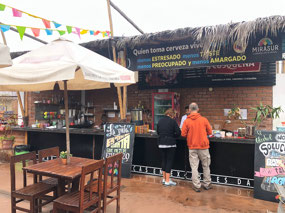
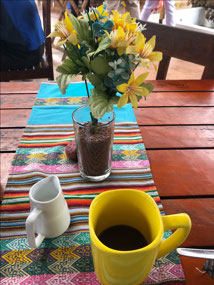
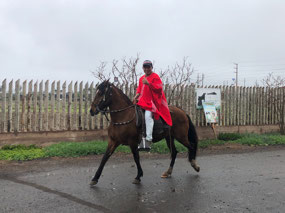
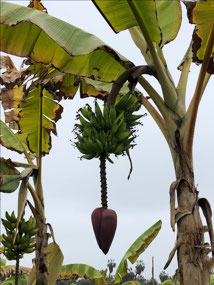
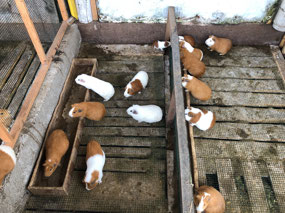
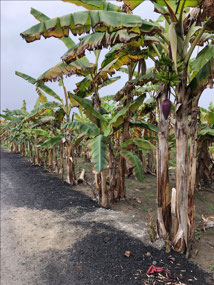
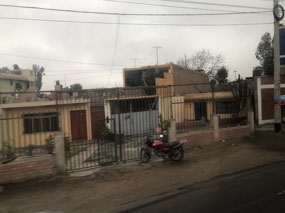
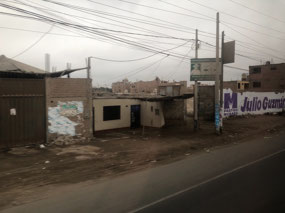
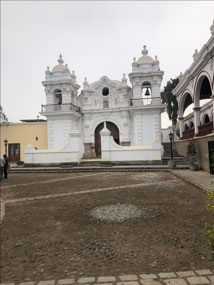




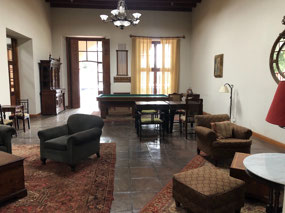
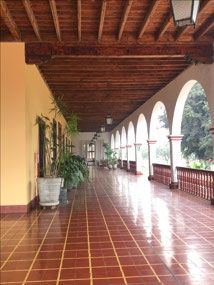
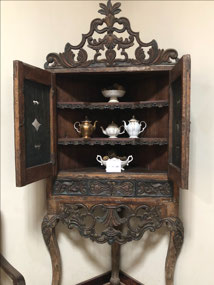
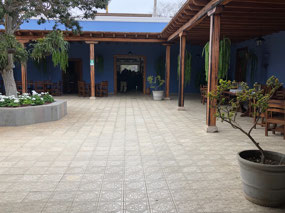
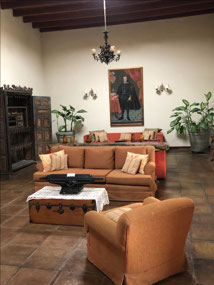
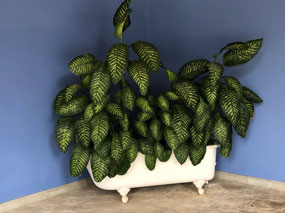
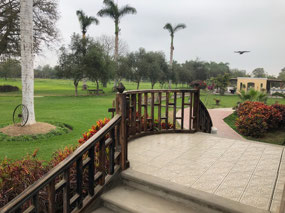
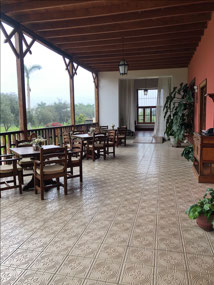
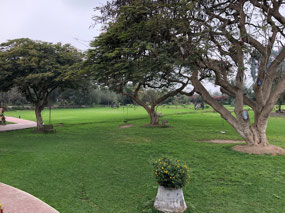

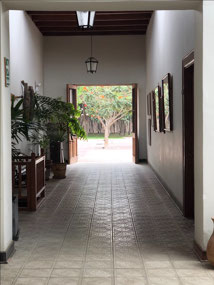
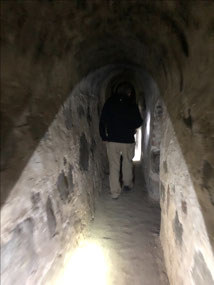
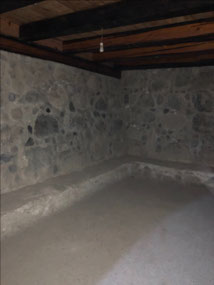
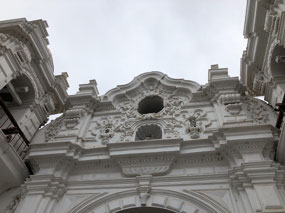
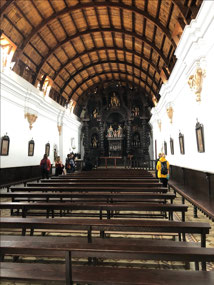
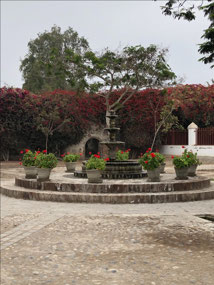
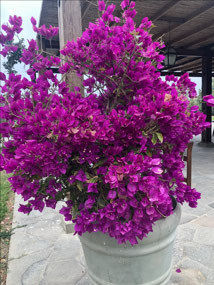
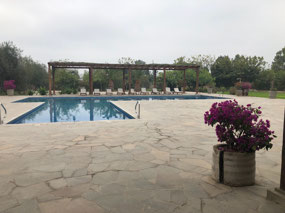
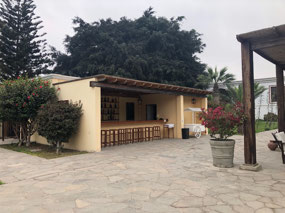
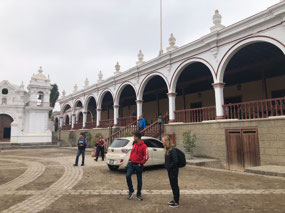
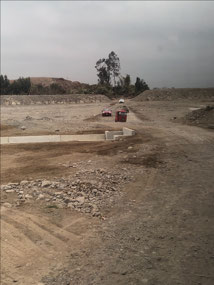
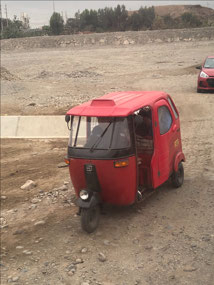

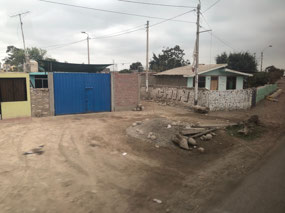
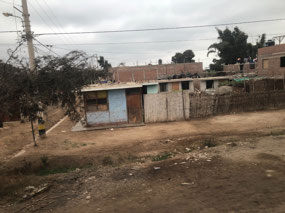
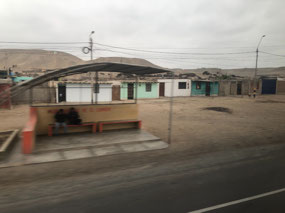
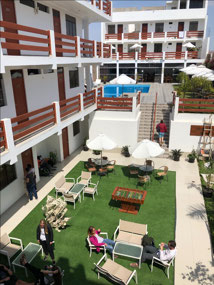
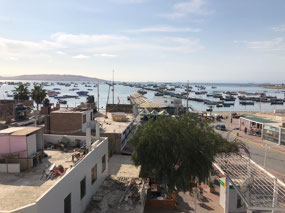
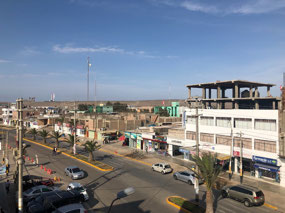
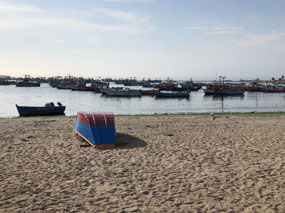
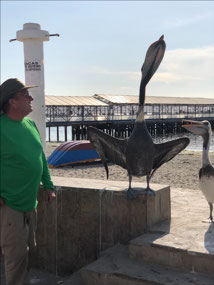
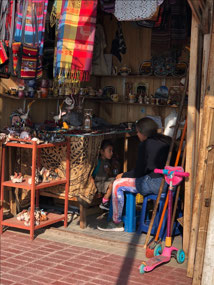
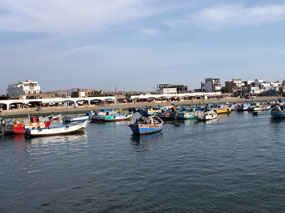

Pam Seath
2019-09-21
I think I would be scared to eat. Know what you mean about buses - Grant and I had a large bus just for we two on one trip. From us both.
Jill
2019-09-21
Your zest for adventure amazes me. You’ve packed a lot of activity in a short time already. Love hearing about it all.
Linda
2019-09-22
Dina your pictures are beautiful,love hearing about your adventures.